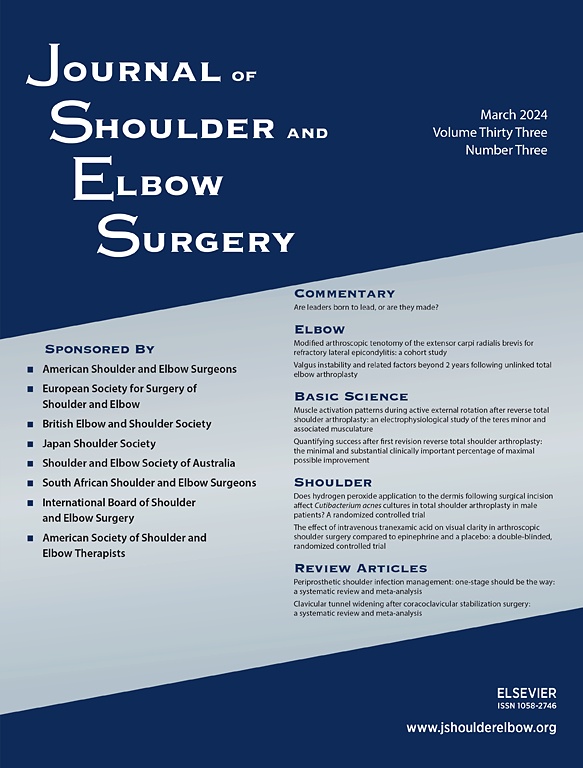
Similar recurrence rates when dislocated shoulder is placed in internal/external rotation

Similar recurrence rates when dislocated shoulder is placed in internal/external rotation
Immobilization in internal or external rotation does not change recurrence rates after traumatic anterior shoulder dislocation
J Shoulder Elbow Surg. 2014 Jan;23(1):13-9. doi: 10.1016/j.jse.2013.07.037. Epub 2013 Sep 30.Did you know you're eligible to earn 0.5 CME credits for reading this report? Click Here
OE EXCLUSIVE
Dr. Vavken discusses the similar recurrence rates observed when dislocated shoulder is placed in internal/external rotation.
Synopsis
This systematic review/ meta-analysis comprised of 5 studies (471 patients) which compared the recurrence rates of first-time, traumatic shoulder dislocation following shoulder immobilization in internal rotation versus external rotation. Pooling of results revealed no significant difference in recurrence rates between immobilization methods after first-time traumatic shoulder dislocation.
To view the full content, login to your account,
or start your 30-day FREE Trial today.
FREE TRIAL
LOGIN
Forgot Password?
Explore some of our unlocked ACE Reports below!

Learn about our AI Driven
High Impact Search Feature
Our AI driven High Impact metric calculates the impact an article will have by considering both the publishing journal and the content of the article itself. Built using the latest advances in natural language processing, OE High Impact predicts an article’s future number of citations better than impact factor alone.
Continue



 LOGIN
LOGIN

Join the Conversation
Please Login or Join to leave comments.